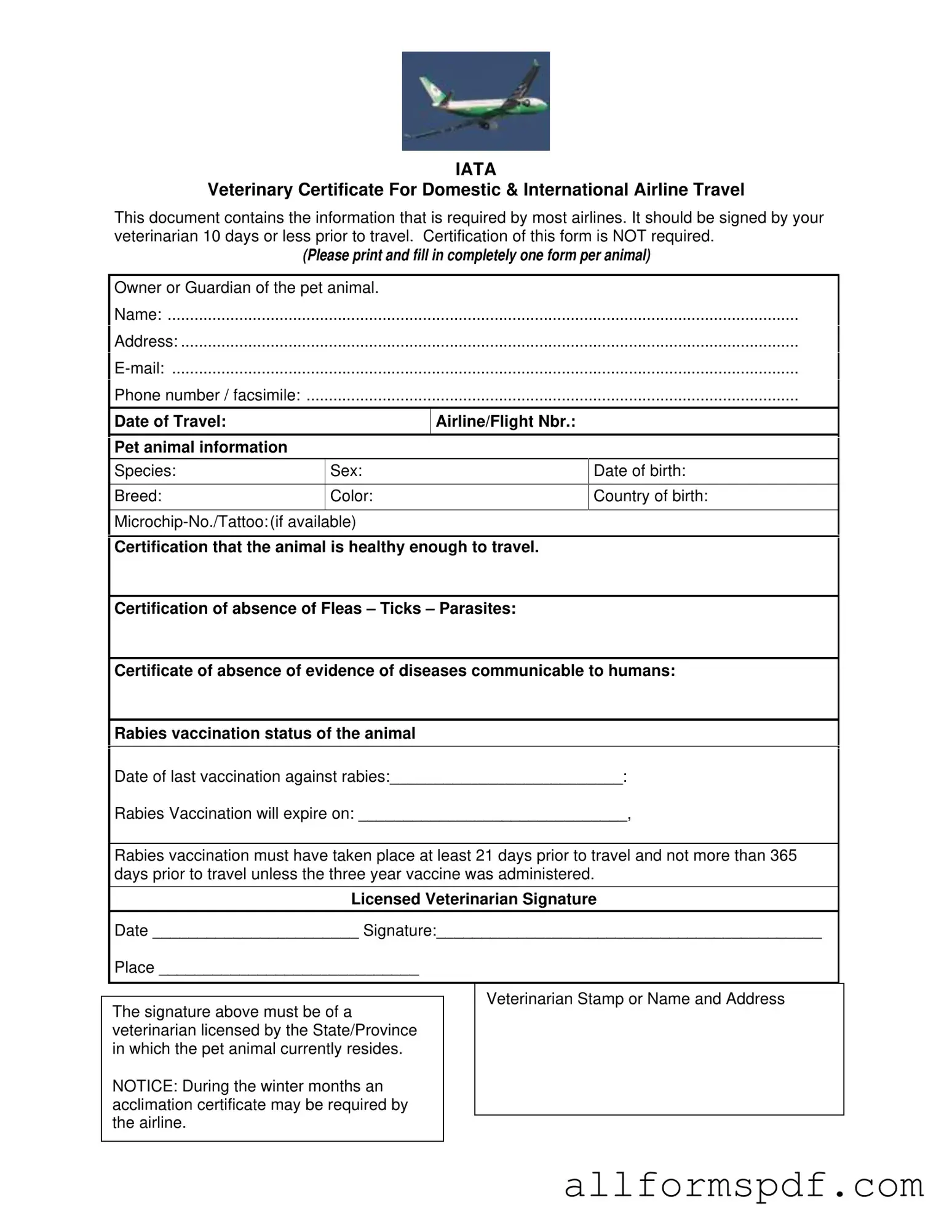When filling out the Veterinary Certificate Travel form, many pet owners make simple yet impactful mistakes that can lead to delays or complications during travel. One common error is incomplete information. Each section of the form is essential for ensuring that your pet can travel without issues. Owners often forget to provide details such as the pet’s breed, color, or microchip number. Omitting these specifics can result in confusion or even denial of travel.
Another frequent mistake involves the timing of the veterinarian's signature. The form must be signed by a licensed veterinarian no more than 10 days before travel. Some pet owners mistakenly seek a signature too early, thinking it will suffice for their travel plans. This can lead to complications, as airlines may not accept a certificate that is not current. Always ensure that your veterinarian completes the form within the appropriate time frame.
Many people also overlook the vaccination details. The form requires information about the rabies vaccination status, including the date of the last vaccination and its expiration. If this information is inaccurate or missing, it may result in travel restrictions. It's crucial to double-check that the vaccination was administered at least 21 days prior to travel and is still valid, as airlines are strict about these requirements.
Additionally, some pet owners fail to provide contact information accurately. The form asks for an email address and phone number, which should be current and reachable. In case of emergencies or last-minute changes, airlines need to contact the owner. Providing outdated or incorrect contact details can lead to missed communications, which can be frustrating and stressful.
Finally, neglecting to include the veterinarian's stamp or signature is a common oversight. The form must be signed by a veterinarian licensed in the state where the pet resides. Without the proper signature and stamp, the document may be deemed invalid. This can prevent your pet from boarding the flight, causing unnecessary delays. Always ensure that your veterinarian completes this step before you head to the airport.
